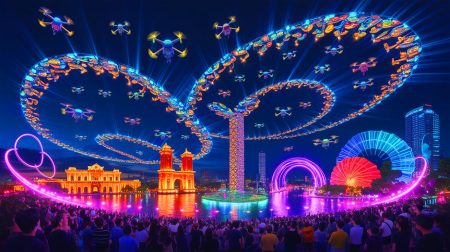| IN A NUTSHELL |
|
In a groundbreaking showcase, a Chinese startup has unveiled its marathon-winning humanoid robot, Tiangong, highlighting its potential across a spectrum of real-world applications. This remarkable robot recently made headlines by clinching first place in a humanoid-only half marathon in Beijing, completing the 13-mile course in a little over two and a half hours. Designed with versatility in mind, Tiangong promises to revolutionize industries by tackling risky tasks and boosting productivity with its intelligent, adaptive performance. The event in Beijing on May 16 was a testament to the robot’s potential in manufacturing, logistics, home assistance, and healthcare.
The Rise of a Versatile Robot
Tiangong’s capabilities were on full display during the event, where it adeptly managed tasks ranging from placing fruit on a plate to complex warehouse logistics. Its ability to navigate challenging terrains, such as inclines, sand, grass, and gravel, speaks volumes about its design and engineering. Developed by the Beijing Innovation Centre of Human Robotics, the robot is designed to tackle scenarios that pose risks to humans, thereby enhancing productivity and efficiency. This fully electric marvel maintains a steady speed of 3.73 miles per hour and is equipped with advanced electric actuators for multi-directional movement.
Standing at a height of 163 centimeters and weighing 94.7 pounds, Tiangong’s lightweight design is integral to its stability during dynamic activities like running. The robot’s motion is powered by State Memory-based Predictive Reinforcement Imitation Learning, an advanced technique that enables natural, human-like movement. With a processing capability of 550 trillion operations per second, it is primed for high-performance tasks requiring real-time responses. Its sensor suite, including visual perception units, 3D vision sensors, and a high-precision inertial measurement unit, provides robust situational awareness and motion control.
China’s Leading Role in Robotics Innovation
China has positioned itself as a key player in the field of humanoid robot development. In November 2023, the Ministry of Industry and Information Technology announced an ambitious national strategy aimed at achieving mass production of humanoid robots by 2025. By 2027, these robots are expected to possess independent thinking, learning, and creativity capabilities. At the heart of this initiative is Beijing’s Economic and Technological Development Area, a major hub for robotics innovation, bringing together 110 companies to build a comprehensive industrial chain.
Recently, Tiangong’s creators unveiled the “Hui Si Kai Wu” platform, a universal software system designed to significantly enhance robotic intelligence and adaptability. This advanced technology equips robots with full-process intelligence, enabling them to comprehend tasks, plan execution, and adapt in real-time to unexpected challenges. Unlike traditional robots with limited functions, this platform allows for operation in diverse environments, from homes and commercial spaces to industrial settings. The dynamic adaptability of this system marks a significant advancement in intelligent robotics.
Practical Applications and Future Prospects
Tiangong’s demonstration included performing precise, fluid movements while sorting tableware and handling waste disposal. The robot’s system enables it to re-evaluate and re-plan actions when encountering challenges, ensuring successful task completion. This level of flexibility represents a significant leap forward in the field of intelligent robotics. The makers of Tiangong aim to position it not only as the fastest robot but also as the most practical for real-world use, enhancing its versatility across various sectors.
As a multifunctional service robot, Tiangong is poised to adapt to industries requiring intelligent automation. Its potential applications span manufacturing, logistics, home assistance, and healthcare, making it a valuable asset in scenarios that demand nuanced and safe interactions. The robot’s ability to tackle risky tasks highlights its potential to revolutionize traditional practices, providing a safer and more efficient alternative to human labor in hazardous environments.
Implications for the Future
The development of Tiangong and similar humanoid robots signals a transformative era in robotics. By pushing the boundaries of what robots can achieve, China is setting the stage for a future where robots will play an integral role in daily life and industry. The potential for robots like Tiangong to revolutionize various sectors is vast, but it also raises important questions about the future of work and the role of humans in increasingly automated environments.
As we witness these technological advancements, one must ponder: How will society adapt to and integrate these intelligent machines, and what new possibilities will they unlock for the future of human-robot collaboration?
Did you like it? 4.5/5 (20)









Wow, a robot that can run marathons and work in factories? What’s next, a robot chef? 🤖👨🍳